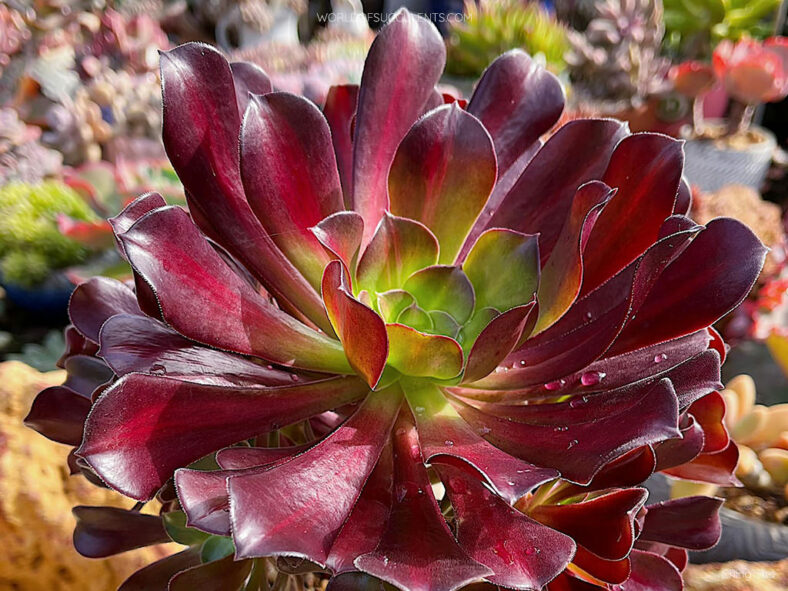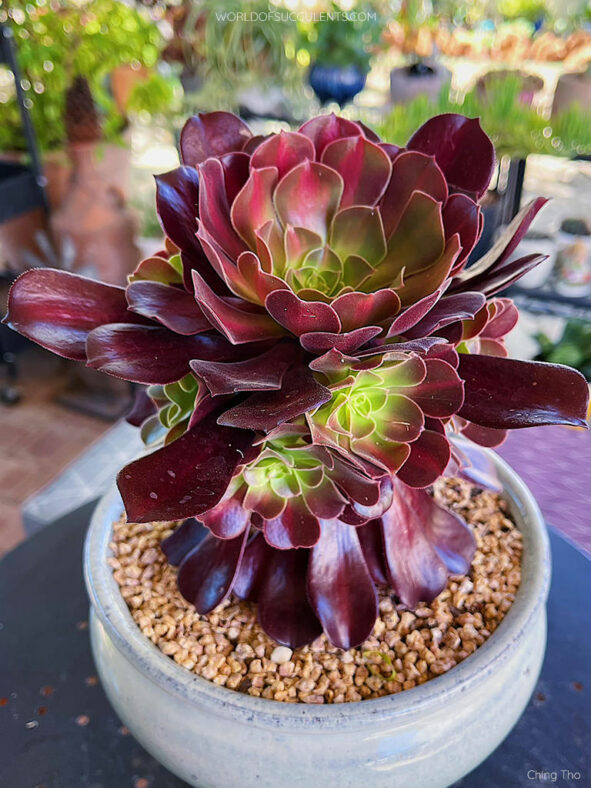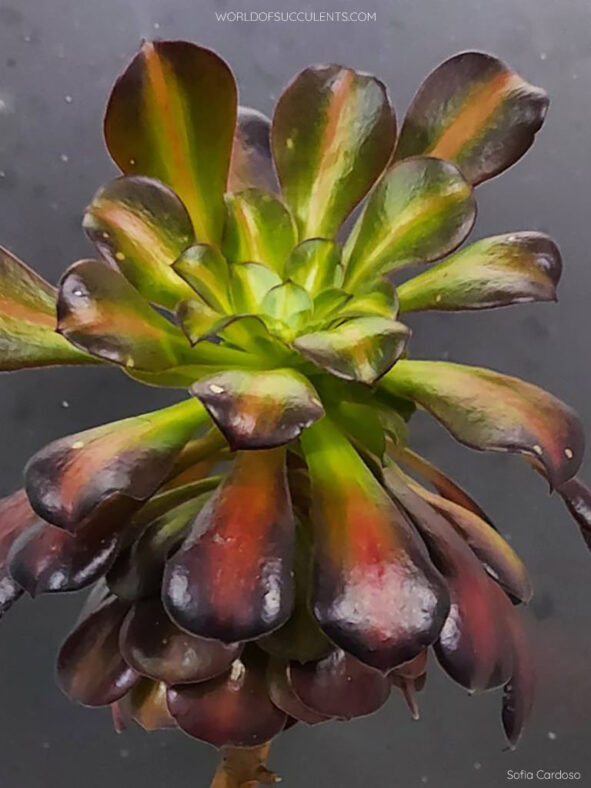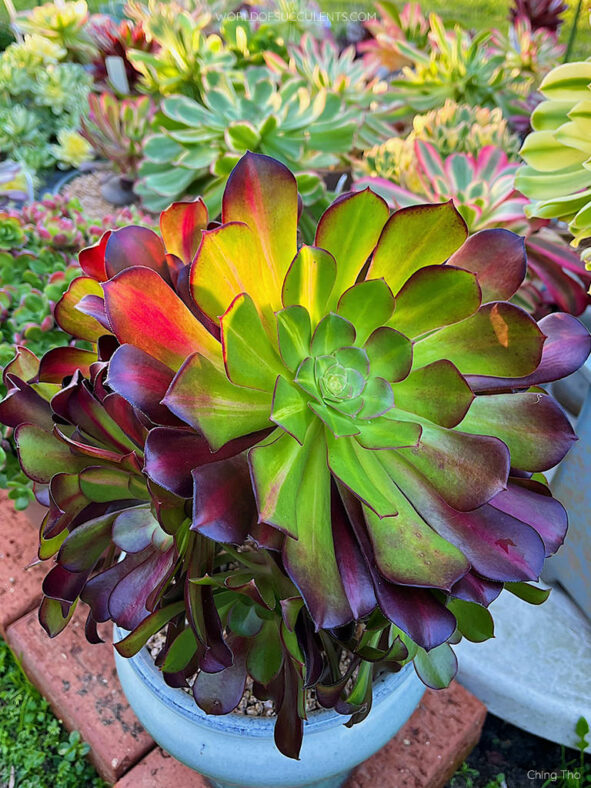Aeonium 'Kilimanjaro' is a beautiful succulent that is easy to grow and forms a nicely branching structure.
Scientific Name
Aeonium 'Kilimanjaro'
Scientific Classification
Family: Crassulaceae
Subfamily: Sempervivoideae
Tribe: Aeonieae
Genus: Aeonium
Origin
Aeonium 'Kilimanjaro' is thought to be a sport of Aeonium 'Medusa'.
Description
Aeonium 'Kilimanjaro' is a stunning variegated succulent that forms rosettes of leaves that show deep shades of green, red, purple, and black. It can grow up to 18 inches (45 cm) tall and freely produces rings of offsets, forming an attractive clump as it matures. The leaves are spoon-shaped with soft pointed tips and slightly ciliate margins. Unlike the similar Aeonium 'Medusa', the leaves of this plant have darker outer portions and a lighter central band. The colors of the leaves change depending on the season and sun exposure. The new leaves are apple green. The variegation often becomes less prominent during the summer, but the colors reappear once the weather cools.
Flowering has not been observed to date.

How to Grow and Care for Aeonium 'Kilimanjaro'
Light: Aeonium 'Kilimanjaro' thrives in full sun to partial shade, but in summer, light shade may be necessary, especially during the hotter afternoon hours. When growing indoors, ensure it receives as much bright indirect light as possible to prevent the plant from becoming leggy and stretched.
Soil: Unlike most succulents, this plant requires sandy loam or regular potting soil amended with perlite. Avoid placing it in premade soil mixes designed for succulents, as they need more moisture than they typically provide.
Temperature: Aeonium 'Kilimanjaro' does not like hot or dry weather, so it may go dormant in summer. It grows best in USDA Plant Hardiness Zones 10a to 11b, with average minimum winter temperatures ranging from 30 to 50 °F (-1.1 to 10 °C).
Watering: Water the plant thoroughly in spring and fall, allowing the soil to dry before watering again. During the winter, water it more sparingly. While this plant requires more water than most succulents, too much moisture can lead to root rot. During its dormancy in summer, stop watering except in arid conditions.
Fertilizing: To promote healthy growth, apply a water-soluble fertilizer diluted to half the recommended strength. Feed only during the growing season.
Repotting: If growing Aeonium 'Kilimanjaro' in a container, repot it every two to three years during the spring. Choose a container with drainage holes to prevent root rot.
Propagation: This plant is easy to propagate by stem cuttings. Take cuttings during the growing season and allow the cut end to dry for several days before planting.
Learn more at How to Grow and Care for Aeonium.
Toxicity of Aeonium 'Kilimanjaro'
Aeonium 'Kilimanjaro' is considered non-toxic, so it is safe for growing around children and pets.
Links
- Back to genus Aeonium
- Succupedia: Browse succulents by Scientific Name, Common Name, Genus, Family, USDA Hardiness Zone, Origin, or cacti by Genus
Photo Gallery
Click on a photo to see a larger version.


